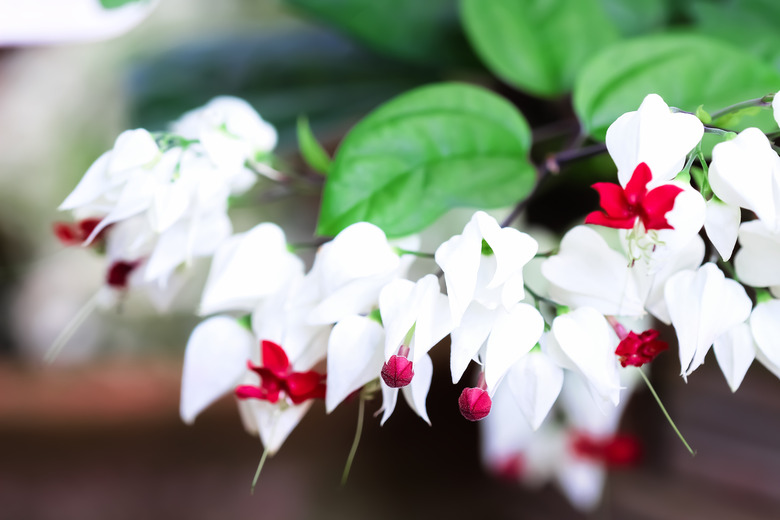How To Care For Clerodendrum Plants
We may receive a commission on purchases made from links.
Clerodendrum is not one plant, but a big, beautiful genus of flowering plants that are extremely popular, thanks to their bright spring color. One of the most popular of the Clerodendrum clan is called the bleeding heart vine — at least some of the time time. This twining tropical evergreen is also called glory bower, bagflower, bleeding glory bower, tropical bleeding heart, and glory tree.
Meet the Bleeding Heart Vine
Meet the Bleeding Heart Vine
With all of those competing common names, it's probably best to refer to this plant using its botanical name Clerodendrum thomsoniae if you ask for it at the garden store. Despite its primary common name, the bleeding heart vine, it is no relation to other plants called "bleeding heart." It is part of the Clerodendrum genus and hails from tropical western Africa.
Needless to say, those living in cool-winter zones will have to grow bleeding heart vine as a houseplant. But if you live in U.S. Department of Agriculture plant hardiness zones 10 through 12, you can look forward to an evergreen vine that grows up to 15 feet tall with a similar spread. It's an attractive and robust twining vine with rounded leaves to 6 inches long, and it needs no tendrils nor suckers to climb. But the summer flowers are most of the show. They have pure white, heart-shaped flowers and, in striking contrast, dark red corollas.
Admire Bleeding Heart Vine Flowers
Admire Bleeding Heart Vine Flowers
Spectacular is almost too tame a word to describe these plants when in bloom. The flowers are small but grow in large clusters of up to 20 together. They have puffed out white calyxes with brilliant crimson corollas that extend far beyond the petals.
You may expect blossoms this beautiful to come and go quickly, but bleeding heart vine flowers last several months, turning from snowy white to blushing pink or lavender. Given enough sunlight and a warm enough climate, the bleeding heart vine blooms most of the year. But summer is its heyday.
The exotic flowers can produce fruit if they are pollinated. When they first appear, they are green but ripen to a dark shade of red to black. When mature, they split open to reveal four seeds set against a bright orange interior.
Care for Bleeding Heart Vines
Care for Bleeding Heart Vines
If you live in a warm-winter climate where temperatures don't fall below 47 degrees Fahrenheit, consider growing bleeding heart vine outside. Plant it in a location with dappled sun or partial shade near a trellis or other support. A spot with morning sun and afternoon shade is ideal. Keep the soil moist as the plant needs moisture and a humid environment.
You can also grow the bleeding heart vine indoors on a container trellis for a tropical look. But keep in mind that, growing inside, the plant needs a period of winter dormancy. Move the vine to a cool location that gets no warmer than 65 degrees during the day and 55 degrees at night. Water enough to prevent the soil from drying out. Prune the vine before new growth begins in early spring. Then move the bleeding heart vine to a bright, warm area, increase irrigation, and resume fertilizer use.
